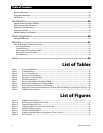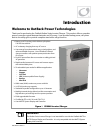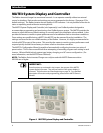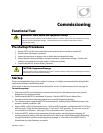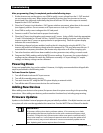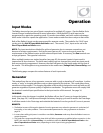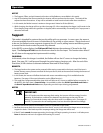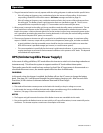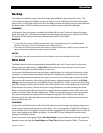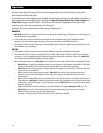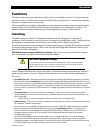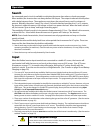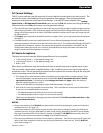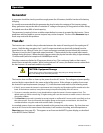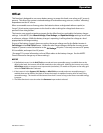
Operation
12 900-0020-01-00 Rev A
The grid-interactive function can only operate while the utility grid power is stable and within specific limits.
If the AC voltage or frequency vary outside these limits, the inverter will stop selling. If the inverter
stops selling, the MATE3 will show the reason. Sell Status messages are listed on page 43.
If the AC voltage or frequency vary outside the maximum limits, the inverter will also disconnect from
the utility grid. The Radian inverter’s grid-interactive limits are specified on page 46. The AC source
acceptance limits are specified on page 17. These numbers are not necessarily the same.
When power is returned to the utility grid, it may possible to make the utility meter run backwards. The net
result would be to sell power to the utility company. However, this depends on whether there are other
loads in the system. Loads on the main panel (not on the inverter’s output) may consume this power as fast
as it is generated, preventing the meter from running backwards. In this case, the result of selling would be
to reduce the consumption of AC power, not reverse it.
The amount of power an inverter can sell is not equal to its specified output wattage. Its maximum selling
output is 7.68 kW. However, output will vary with inverter temperature, battery type, and other conditions.
A good guideline is that the renewable source should be sized to continuously deliver no more than
85% of the inverter’s specified wattage (per inverter, in a multi-inverter system).
This recommendation is specifically for the inverter’s grid-interactive feature. In some cases, the source
may be sized larger to account for environmental conditions or the presence of DC loads. This depends
on individual site requirements.
UPS (Uninterruptible Power Supply)
In the event of utility grid failure, UPS mode allows the inverter to switch to its inverting mode almost
instantaneously. This allows the system to support sensitive AC loads without interruption.
The transfer speed in this mode has been reduced so that if the AC input power is disconnected or a
scheduled disconnect occurs, the transfer speed will be less than 4 milliseconds.
CHARGING
:
In this mode, when the charger is enabled, the Radian will use the AC source to charge the battery
bank. (See page 20.) It will proceed through the entire battery charging cycle. After the end of the
Float timer, it will continue to alternate between Silent and Re-Float stages.
BENEFITS
:
This mode will maintain constant power to the loads with virtually no drop in voltage or current.
In this mode, the inverter will offset the loads with excess renewable energy if it is available from the
batteries. (See page 19 for more information on the Offset function.)
NOTES
:
The Support and grid-interactive functions of the Radian inverter are unavailable in this mode.
Due to the need for the Radian inverter to react quickly to AC source fluctuations, it must remain fully active
at all times. The inverter requires a continuous consumption of 42 watts.



